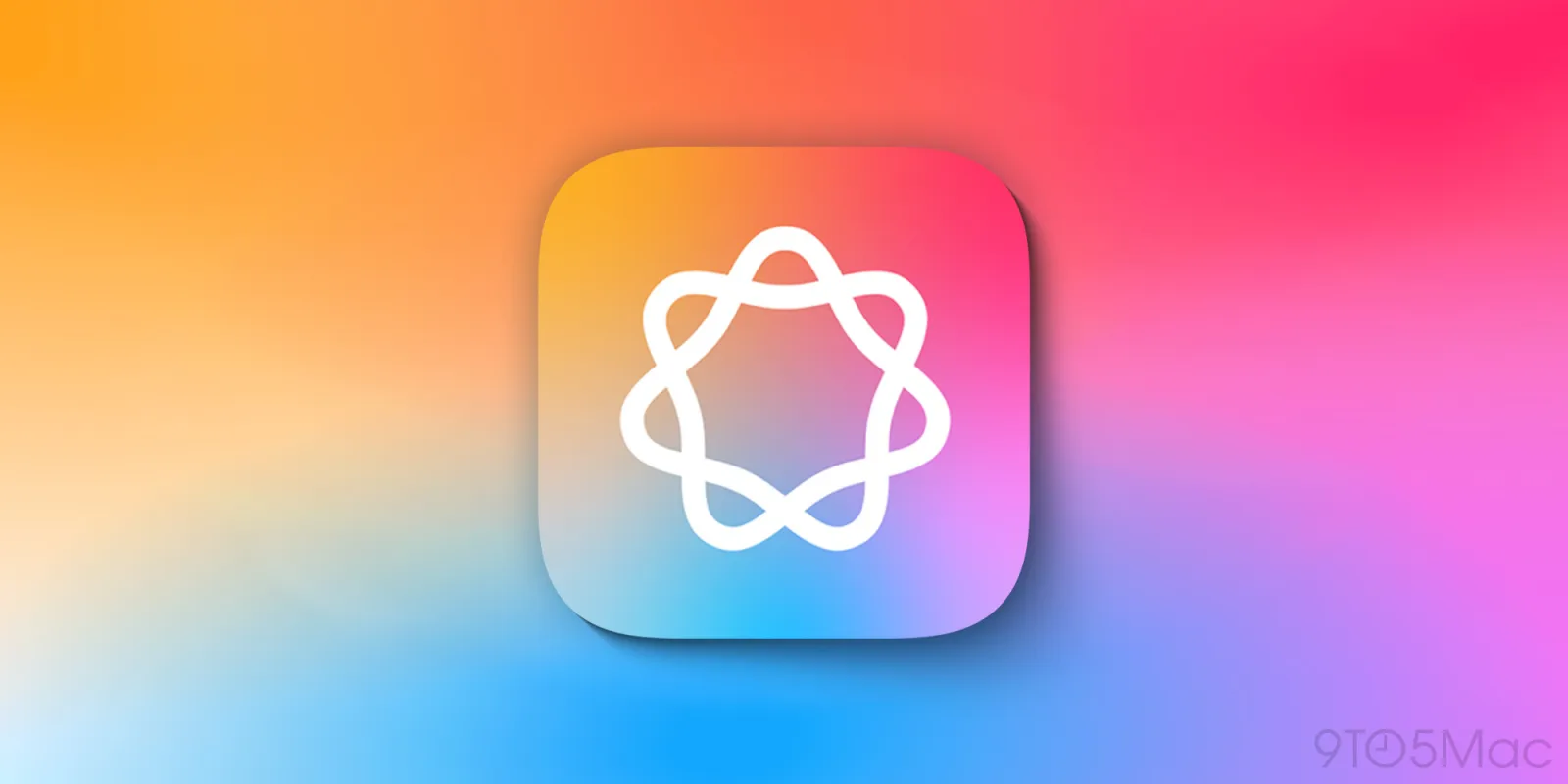The Lenovo ThinkBook 16 Gen 7 enters a dynamic landscape of business laptops, distinguished by its utilization of ARM-based processing through the Qualcomm Snapdragon X Plus platform. This architecture promises a unique blend of extended battery life and adequate performance for typical office tasks. However, the market for portable computing devices is highly competitive, and a thorough analysis is essential to ascertain the ThinkBook 16 Gen 7’s true value and suitability for diverse user needs. This review delves into the intricacies of the device, examining its specifications, design, performance characteristics, and overall user experience to provide a holistic and objective perspective.
Lenovo ThinkBook 16 Gen 7
Hardware and Specifications:
The specific ThinkBook 16 Gen 7 model under review features the Qualcomm Snapdragon X Plus X1P-42-100 processor. This processor is a critical component to understand, as it represents the entry-level offering within the Snapdragon X Plus family. While it retains the inherent architectural advantages of ARM, its clock speed is capped at 3.2 GHz, slightly lower than the 3.4 GHz achievable by higher-tier Snapdragon X Plus chips. This seemingly minor difference can influence performance, particularly in computationally intensive applications. The Snapdragon X Plus processor also boasts a dedicated Neural Processing Unit (NPU) capable of 45 trillion operations per second (TOPS). This NPU accelerates AI-driven tasks and contributes to power efficiency.
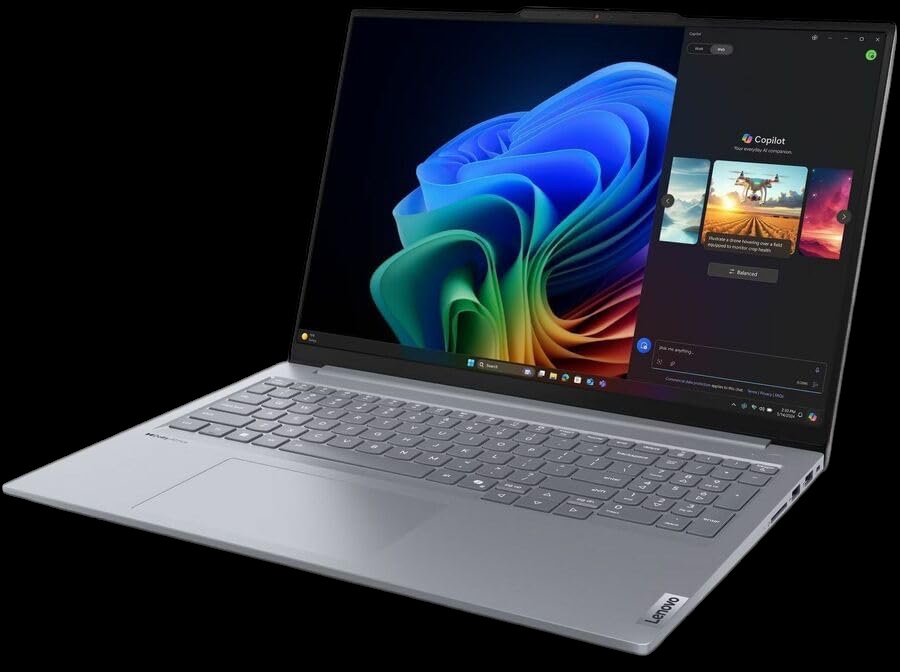
The reviewed configuration includes 16GB of LPDDR5X RAM and a 512GB PCIe Gen4 SSD. Lenovo provides options for up to 32GB of RAM and a 1TB SSD, allowing users to tailor the device to their specific memory and storage requirements. The 16-inch display employs an IPS panel with a 1920×1200 resolution. This aspect ratio, slightly taller than the conventional 16:9, is often preferred for productivity tasks, offering additional vertical workspace for documents, spreadsheets, and web browsing.
Design and Build Quality:
The ThinkBook 16 Gen 7 adopts a conservative “Luna Gray” color scheme, a common aesthetic choice for laptops intended for professional use. The design philosophy emphasizes functionality and practicality, with minimal extraneous branding. The chassis construction demonstrates reasonable build quality; there is minimal flex observed under normal handling conditions, and the hinge mechanism operates smoothly, enabling single-handed opening of the laptop.
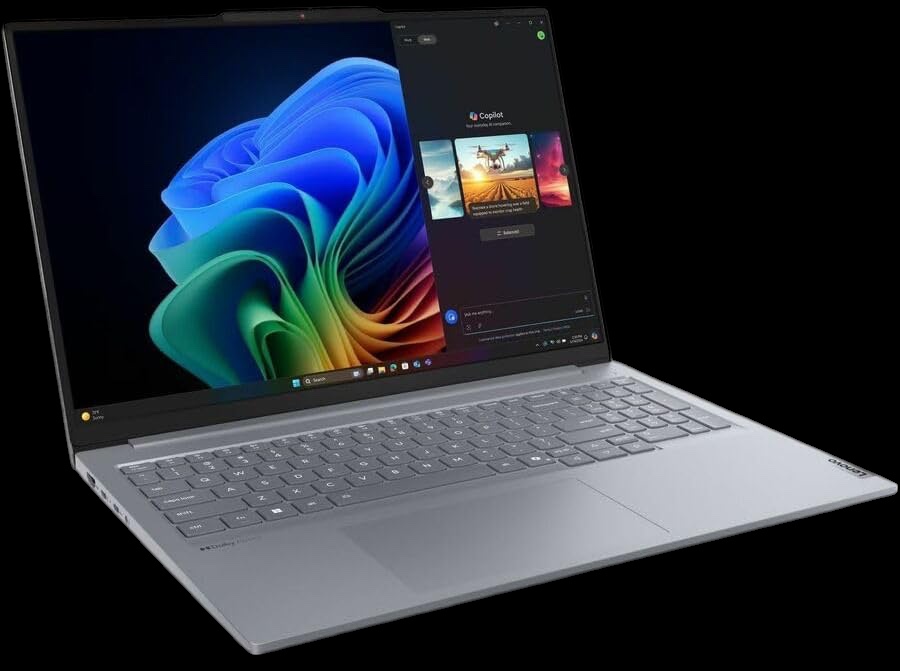
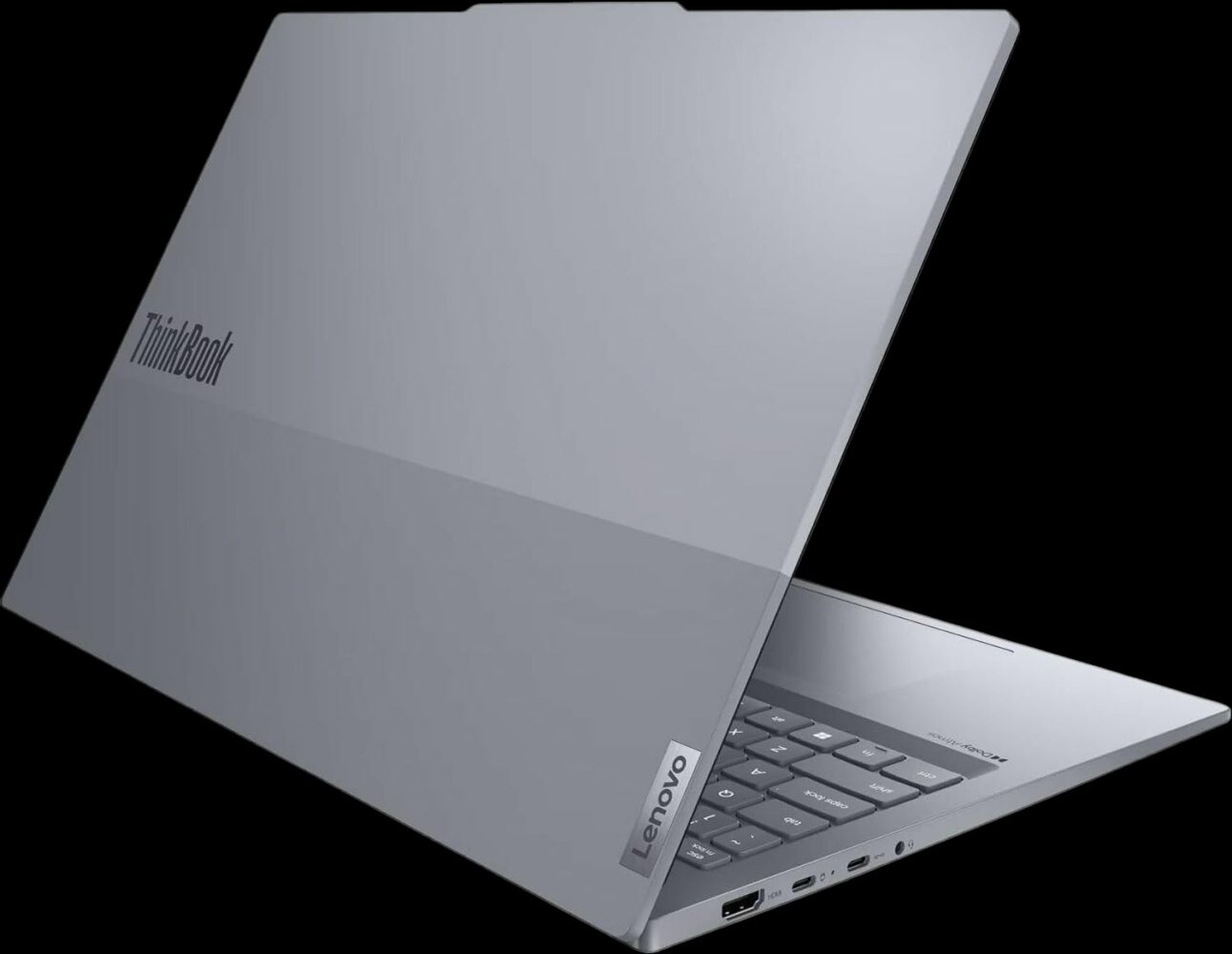


However, the laptop’s weight of 1.82 kg warrants consideration, especially given the ARM-based architecture, which is often associated with lighter devices. While the 16-inch form factor naturally contributes to the overall weight, it is worth noting that some competing laptops in the same size class, even those utilizing more conventional x86 processors, achieve lower weight figures. This aspect could be a factor for users who prioritize portability.


Keyboard and Trackpad:
The keyboard layout is full-size, incorporating a dedicated number pad and white backlighting for improved visibility in low-light environments. The tactile experience of the keyboard is subjective, and initial impressions can sometimes be misleading. While the keyboard may initially feel less crisp than some users might prefer, particularly those accustomed to the distinct tactile feedback of ThinkPad keyboards, extended use can often lead to a more positive reassessment. The keys provide adequate travel and offer sufficient feedback, avoiding a mushy or unresponsive feel. However, the overall typing experience lacks the crispness and responsiveness that some users may seek.
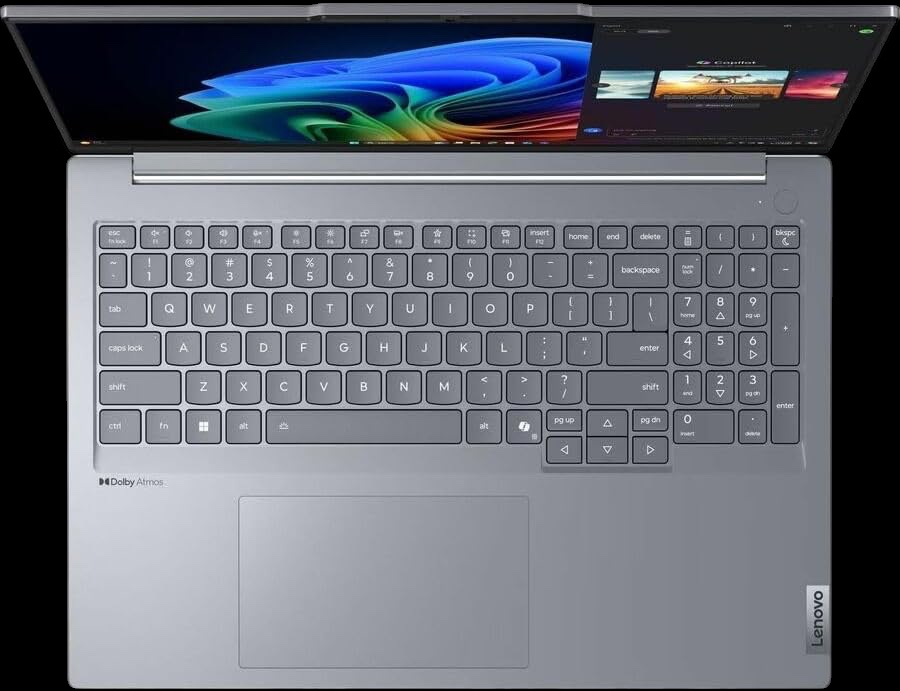
The trackpad stands out as a positive aspect of the design. Its ample size and smooth surface facilitate comfortable and precise cursor control. The integrated click mechanism provides a solid and reliable feel, and the trackpad is ergonomically positioned for convenient access during typing.
Display and Speakers:
The 16-inch IPS display offers a substantial amount of screen real estate, well-suited for productivity-oriented tasks. However, the display’s brightness is a notable limitation. With a rated maximum brightness of 300 nits, the display can struggle to remain legible in brightly lit environments. The color reproduction is also relatively subdued, even for an IPS panel. While the matte finish helps to reduce glare and reflections, the low brightness remains a significant drawback.
The bottom-firing speakers provide sufficient volume for online meetings, casual video watching, and background music. However, the overall sound quality is average, lacking the depth and clarity that more discerning listeners might desire. At higher volume levels, some distortion can become noticeable. For a truly immersive audio experience, the use of external headphones or speakers is recommended. The ThinkBook 16 Gen 7 also incorporates Dolby Atmos audio technology, which aims to enhance the audio experience, although the limitations of the built-in speakers may restrict the full realization of this technology.
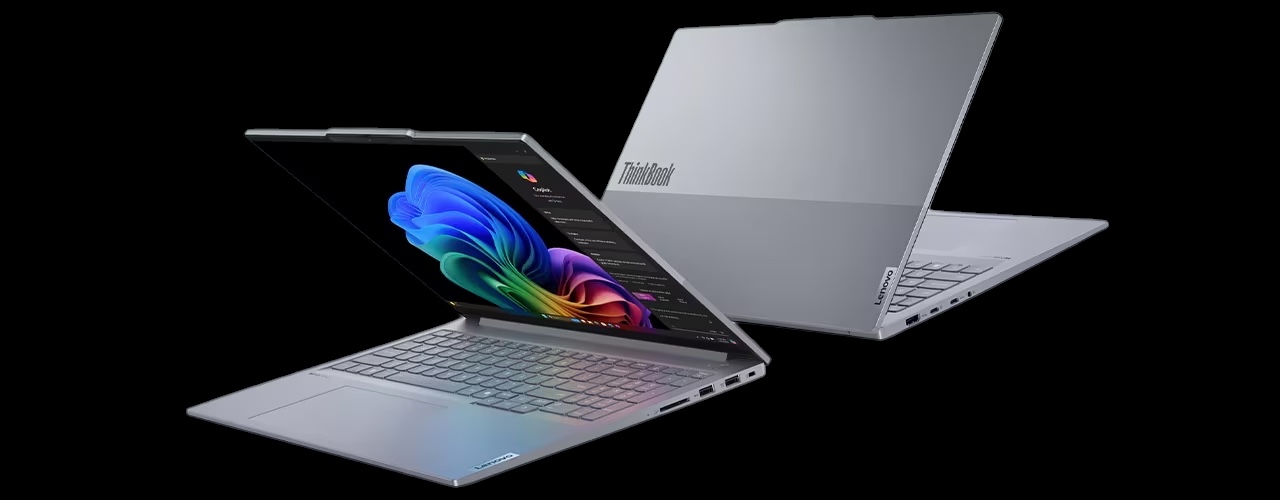
Webcam, Microphone, and Biometrics:
The integrated 1080p webcam includes a physical privacy shutter, a feature that many users appreciate for enhanced security and peace of mind. The image quality produced by the webcam is acceptable for video conferencing purposes, although it can exhibit graininess and noise, particularly in low-light conditions.
The built-in microphone array performs effectively, capturing clear and intelligible audio even in the presence of moderate background noise. The microphone’s noise cancellation capabilities are beneficial for online meetings and voice calls, ensuring clear communication.
The fingerprint reader, conveniently integrated into the power button, provides a secure and efficient method for user authentication via Windows Hello. Facial recognition is not supported on this model.

Connectivity:
The ThinkBook 16 Gen 7 offers a reasonable selection of ports for a business-oriented laptop. The left side of the device features an HDMI 2.1 port for external display connectivity, two USB Type-C ports (supporting USB 10Gbps data transfer, DisplayPort video output, and Power Delivery for charging), and a combined headphone/microphone jack. The right side includes a Kensington Nano lock slot for physical security, two USB Type-A ports (5Gbps), and a full-size SD card reader for media access. While this port selection is generally adequate for many users, some, particularly those in professional networking environments, might find the absence of a dedicated Ethernet port a drawback.
Performance:
The combination of the Snapdragon X Plus processor and a fast SSD contributes to a responsive user experience for common productivity tasks. However, the specific Snapdragon X1P-42-100 variant within this machine presents a performance consideration. Benchmark results, particularly those from Cinebench R24, indicate that this CPU performs slightly below the levels achieved by other Snapdragon X Plus implementations due to its lower clock speed.

The most significant performance difference is observed in the GPU. The Adreno GPU integrated into this configuration operates at 1.7 TFLOPS, substantially lower than the 3.8 TFLOPS offered by other Snapdragon X Plus and X Elite chips. This disparity translates to noticeably reduced graphics performance in benchmarks such as 3DMark Time Spy and Night Raid. While this might not be a major concern for users whose workloads are primarily CPU-bound, it is a crucial factor to consider for those who rely on GPU-accelerated applications or engage in even light gaming.
Battery Life:
The ThinkBook 16 Gen 7 excels in battery endurance. In our standardized video playback test, the laptop achieved an impressive runtime approaching 22 hours. While real-world usage patterns will likely result in somewhat shorter battery life, this machine demonstrably offers exceptional longevity, readily surpassing the needs of a full workday.
Verdict:
The Lenovo ThinkBook 16 Gen 7 presents a complex value proposition. It distinguishes itself with exceptional battery life and provides a responsive experience for typical office productivity tasks. However, the use of the lower-end Snapdragon X Plus processor, particularly its integrated GPU, and the limitations of the display’s brightness are notable compromises. While the price point of $999 might appear attractive for a 16-inch Snapdragon-powered laptop, potential buyers are advised to carefully evaluate their individual needs and explore alternative options, including laptops featuring Intel Lunar Lake processors, which are rapidly emerging as strong competitors in the category of portable computers offering extended battery life.
As ARM-based laptops continue to evolve and pricing dynamics shift, the ThinkBook 16 Gen 7’s overall value proposition may become more compelling. However, in its current configuration, it best serves a specific segment of users who prioritize battery life above other considerations and whose computing needs are primarily CPU-centric. The availability of other Snapdragon-powered laptops offering enhanced performance at marginally higher price points introduces a degree of nuance to the decision-making process. A prospective buyer should carefully weigh the trade-offs involved to determine whether the ThinkBook 16 Gen 7 aligns with their specific requirements.





